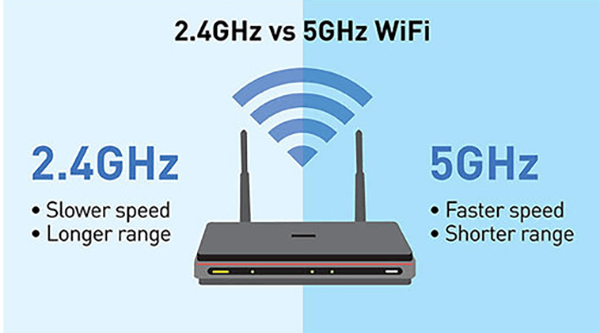5 GHz vs 2.4 GHz wireless frequencies

Whenever we buy a router/modem, we encounter two different types of bands, i.e. 2.4GHz and 5Ghz bands. So in this article, we’re going to bring the hammer down on some of these myths regarding these frequencies and trying to understand what they are?
Most Common MisConception: Are 5Ghz and 5G the Same Thing?
The answer is NO. This is the most common myth nowadays the people have.

I am admitting that it can be confusing similar terms and abbreviations that are out there, but 5G and 5Ghz are in fact two completely different things. 5Ghz is a frequency that is used by modern WIFI systems and 5G, simply means fifth generation. It’s even more confusing when many routers display their 5Ghz WIFI as “5G”. Either way, this can be very confusing to people who are not familiar with the terms and technology.
So now we understood that 5Ghz is not related to 5G, so now the question arises what is the difference between 2.4GHz and 5GHz frequency, and which one is better?
Difference between 2.4 GHz and 5 GHz WiFi?

The wireless router uses radio frequencies to transmit the internet to your WiFi-connected devices like smartphones, laptops, tablets, and more. And the speeds we get over WiFi depend on the ISP plan you are paying for. Now we will dig deep and compare WiFi utilizing 2.4 GHz vs. 5 GHz.
- The primary differences between the two frequencies are the range (coverage) and bandwidth (speed) that the bands provide. The 2.4 GHz band provides coverage at a longer range but transmits data at slower speeds. The 5 GHz band provides less coverage but transmits data at faster speeds.
- The range is lower in the 5 GHz band because higher frequencies cannot penetrate solid objects, such as walls and floors. However, higher frequencies allow data to be transmitted faster than lower frequencies, so the 5 GHz band allows you to upload and download files faster.
- Our WiFi connection on a particular frequency band can also be faster or slower based on interference from other devices. Most WiFi-enabled technologies and other household devices use the 2.4 GHz band, including microwaves and smart home devices(i.e refrigerators, Smart Doors, etc). And when multiple devices attempt to use the same radio space, overcrowding occurs.
- The 5 GHz band tends to have less overcrowding than the 2.4GHz band because fewer devices use it and because it has 23 channels for devices to use, while the 2.4GHz band has only 11 channels.

Which frequency should you choose?
Use 5 GHz for a device closer to the router
If your device doesn’t need to be moved around much and can be located near your router, 5 GHz is your best choice to reduce congestion and take advantage of higher speeds. And, if you’re doing a lot of high-bandwidth activities online, such as gaming or videoconferencing, it’s best to use this frequency and move as close as possible to the router.
Use 2.4 GHz for a device farther from the router
If your device moves around a lot throughout the day (like your smartphone), especially if you have a large home, the 2.4 GHz frequency is your best choice. This wavelength has a longer range and can penetrate solid objects more easily than the 5 GHz band, making it ideal for devices that are taken from room to room or are more distant from the router.
Thanks for reading this article. If you find it informative then please share it among your friends.
Photo Credits: Google Photos
